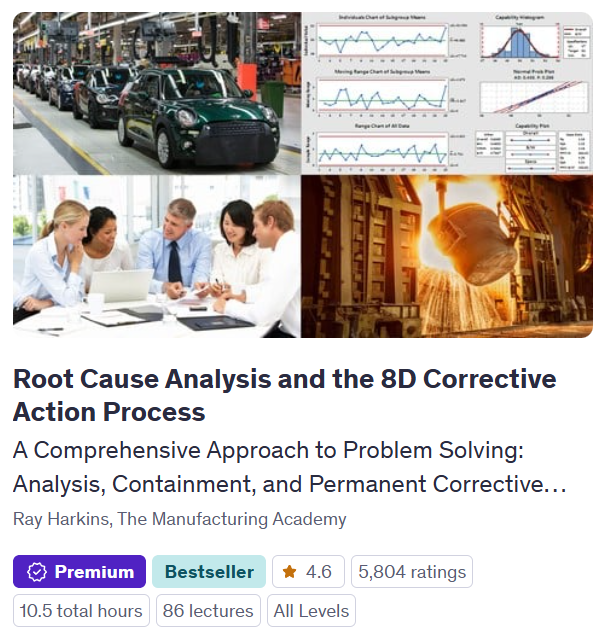Return on Investment Analysis (ROIA), sometimes referred to as Capital Equipment Justification, is the process of building and analyzing a financial model for the purpose of determining the net financial contribution of obtaining a major investment like a factory building or piece of production equipment.
ROIA is the link that connect the brilliant ideas of makers–the engineers, designers and builders—to the goals of the managers who hold organization’s purse strings. When thoroughly conducted, ROIA aligns the best estimates of the revenues and expenses related to a potential purchase with the years in which they will occur.
For instance, when purchasing a new piece of production equipment, a process engineer might estimate the cost of a new machine at $100,000 and the maintenance manager might estimate its installation cost at $20,000. These costs of $120,000 are assigned to Year 0, the start of the project.
Similarly, a marketing analyst might project the product sales resulting from this new machine at $30,000 per year for the next 5 years. These revenues are assigned to Years 1 through 5.
All projects costs—labor, preventive maintenance, inventory, utilities, salvage, etc.—are similarly estimated and assigned to their appropriate project year.
Once this financial model is assembled, these various costs and revenues are “rolled up” to show the potential net gain or loss to the organization. You can find a step-by-step, video-based explanation of the ROIA method in the online short course titled, Return on Investment Analysis for Manufacturing.
Unfortunately, most non-financial managers use analysis methods and techniques that fall somewhat short of the best practices developed by the experts. Methods like the “Payback Period”, while popular, have led many organizations to unexpectedly dismal returns on their major purchases.
Three of the most common mistakes in ROIA modeling, particularly among manufacturing professionals, include:
- Not accounting for the time value of money
- Not accounting for all the costs
- Not running best, worse, typical case scenarios
As the adage goes, “A dollar today is worth more than a dollar tomorrow.” This idea of the time value of money is the entire basis for charging interest on loans. Having money to buy a car today instead of waiting a year to save up your money to buy the same car, to many people, is worth the cost of interest on an auto loan.
Yet as familiar as most engineering and project managers are with this concept in their personal finances, many skip over this principle when evaluating investment options for their organizations.
For example, if you were to invest $100,000 into a machine that returned $20,000 to the organization each year it was in use, many managers would call that a 5-year payback. But in fact, that initial $100,000 investment costs the organization in the form of interest it pays to the banks for its loans and dividends it pays to its shareholders. The value of an organization simply holding money is called its “Cost of Capital”, effectively the interest it must pay on that money.
If an organization’s Cost of Capital is 8% for instance, then the $20,000 it earns after the first year is actually worth only $18,518.51 in today’s dollars
![]()
And the $20,000 your organization receives in revenues after 5 years is worth only $13,611.66 in today’s dollars.
![]()
By failing to account for the time value of money, project managers will consistently over-estimate the ongoing value of their capital investments.
A second common mistake project managers make in evaluating major purchases is not accounting for all the costs of launching their project. Commonly missed cost categories in ROIA models include:
- Work in Process Inventory
- Indirect Labor
- Utilities
- Unplanned maintenance
- Spare parts
- Manufacturing overhead
- Training
Similar to not accounting for time value of money, not accounting for these key items will always skew your projected returned in the wrong direction.
And a third common mistake project managers make with ROIA model is only accounting for a single scenario … their best guess. The obvious problem with guesses of course, is that they tend to be wrong. And while the cost estimate of the initial investment is usually close to its actual cost for seasoned project managers, the cost and revenue estimates for subsequent years increase in uncertainly with each passing minute.
To offer a clearer picture of the future, project managers should perform some sensitivity analysis by running multiple scenarios with the least likely, likely and most likely revenue estimates, for instance. By showing low, medium and high projected values, management teams can have better general expectations for the projects they invest in.
For a deep dive into the essentials of ROIA needed to succeed as an engineering, quality or manufacturing manager, sign up for the online short course titled “Return on Investment Analysis for Manufacturing”. In two short hours, you will learn how to build, use and analyze Excel-based ROI models. Plus, by signing up for the class, you will also receive all the Excel templates used in the class to apply to your projects and organization. Sign up today by clicking this link:



